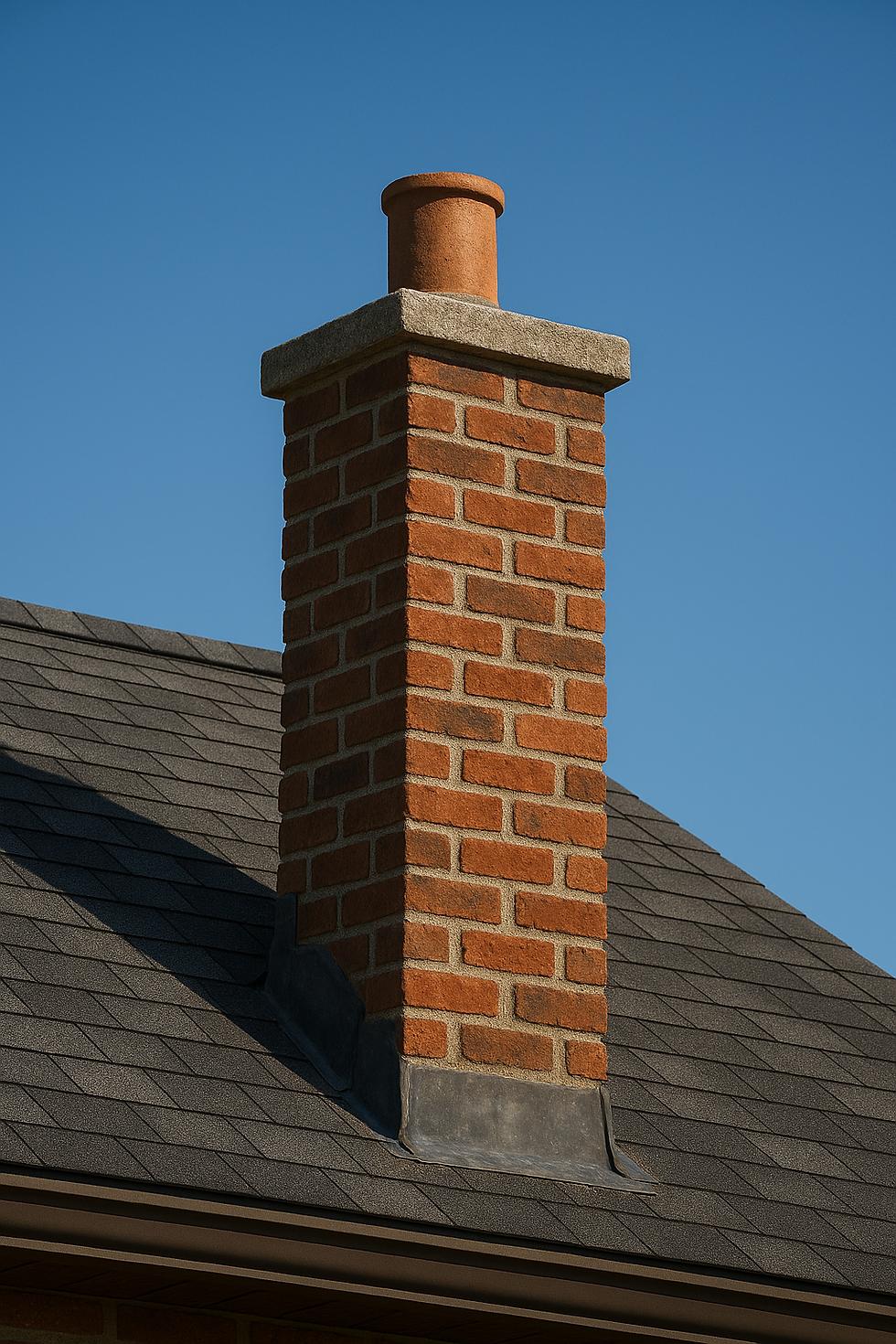Waterproofing Brick and Masonry: Protecting Your Home’s Investment
- Doug Wright
- Aug 22
- 3 min read
Brick, block, and stone are some of the most durable building materials out there. But even the strongest masonry has one hidden enemy: water. Over time, water seeps into pores, joints, and cracks, leading to deterioration that can compromise both appearance and structural integrity.
Some masonry structures are more vulnerable than others. Knowing where problems are most likely to show up—and how to protect them—can save you costly repairs down the road.

Why Chimneys, Planter Walls, and Wing Walls Are More Susceptible
Chimneys
Stand fully exposed above the roofline, taking the brunt of rain, snow, and wind.
Constant heating and cooling cycles cause expansion and contraction, which opens small cracks for water to sneak in.

Planter Walls
Built to hold soil, which keeps constant moisture pressed against the masonry.
Hidden saturation inside the wall can cause deterioration before you ever see surface damage.

Soil keeps masonry constantly moist, causing hidden saturation and damage before surface signs appear
Wing Walls
Often built without capstones or proper drainage.
Flat surfaces collect water, which sits and soaks in, leading to cracking and spalling over time.

Without proper drainage or capstones, wing walls trap water that accelerates deterioration.
Water Repellents vs. Water Sealants
Not all waterproofing products are created equal. In fact, using the wrong type can make problems worse.
Water Repellents
Penetrate the masonry surface instead of coating it.
Keep water out while still allowing vapor to escape (“breathable”).
Extend the lifespan of brick, block, or stone without trapping moisture.
Water Sealants
Form a film on the surface of the masonry.
Prevent walls from “breathing,” which traps moisture inside.
Can lead to cracking, spalling, and freeze–thaw damage—especially in Oklahoma’s climate, where rapid temperature swings are common.

Importance of Using the Right Product
Every masonry structure is unique. The right waterproofing solution depends on:
Material: Brick, block, and stone all absorb water differently.
Exposure: A chimney above the roofline faces harsher elements than a short garden wall.
Application: Proper preparation and professional installation are key to long-term results.
A professional inspection ensures that the correct water repellent is applied in the right way, protecting your masonry without causing hidden damage.
Signs Your Masonry Needs Waterproofing
Homeowners can look for early warning signs before water damage spreads:
Crumbling or powdery mortar joints
White chalky residue (efflorescence)
Dark stains after rain that don’t dry quickly
Bricks or blocks that are flaking or spalling
Interior water stains near chimneys or basement walls

Conclusion & Call to Action
Protecting your masonry means protecting your investment. By choosing breathable water repellents—and avoiding film-forming sealants—you reduce the risk of costly repairs, extend the life of your structure, and keep your home looking its best.
At Wright Floor Leveling & Masonry, we specialize in masonry waterproofing in Oklahoma, including chimney waterproofing, planter wall protection, and drainage improvements.
If you’ve noticed cracks, staining, or water intrusion around your chimney, planter walls, or wing walls, schedule an inspection today. Small preventive steps now can save major repair costs later.
Wright Floor Leveling protects Oklahoma homes with expert masonry waterproofing.
📞 Call us at 580-762-9097 or visit wrightfloorleveling.com to learn more.



















Comments